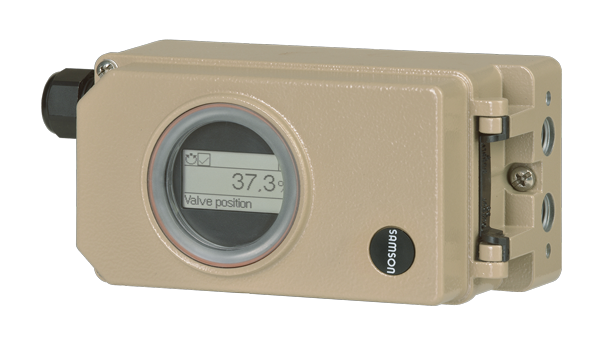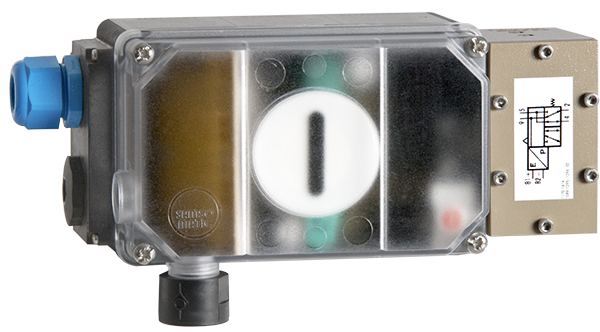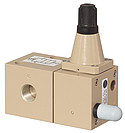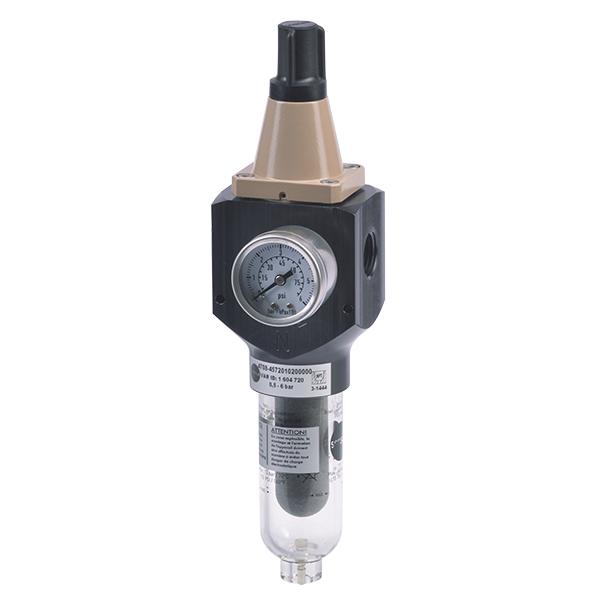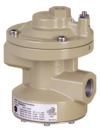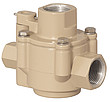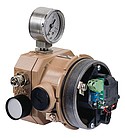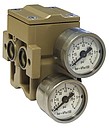Implementation of the Machinery Directive for Pneumatic Control Valves

Declarations of conformity for pneumatic control valves
Pneumatic control valves consist of a linear-motion or rotary-motion valve and a pneumatic rotary actuator. As a result, they fall within the scope of the Machinery Directive 2006/42/EC. SAMSON issues a declaration of conformity in accordance with Annex II, section 1.A. of the Directive 2006/42/EC for these control valves.
Valve accessories as machinery components
Valve accessories, such as positioners, limit switches, solenoid valves etc., are classified as machinery components in the declaration of conformity of final machinery issued by SAMSON. Machinery components do not fall within the scope of the Machinery Directive as specified in § 35 and § 46 of Guide to Application of the Machinery Directive 2006/42/EC issued by the European Commission.
For your own safety
In the Manual H 02 titled "Appropriate Machinery Components for SAMSON Pneumatic Control Valves with a Declaration of Conformity of Final Machinery", SAMSON defines the interfaces of the control valve to the valve accessories and the requirements SAMSON places on valve accessories.
The following only applies when the requirements in the manual are met:
Positioners ensure a predetermined assignment of the valve position (controlled variable) to the input signal (reference variable). They compare the control signal issued by pneumatic or electric automation equipment (controller, control station, process control system) to the position or opening angle of the control valve and supply a corresponding output signal pressure. Positioners are often used as servo-booster as they convert low-energy signals into strong proportional signal pressures up to the maximum supply pressure (6 bar/90 psi). They can be used in standard and splitrange operation.
Limit switches are suitable for automation of on/ off applications and issue an electric binary signal when the valve travel exceeds or falls below an adjusted limit. The signal can be used, for example, for switching control signals, issuing visual and audible alarms, or for connection to central control or alarm systems.
The installed limit contacts are either inductive, electric, pneumatic or software-based, depending on the device version.
The contacts, which can be overridden for the most part, can be used either as normally open contacts or normally closed contacts. SAMSON limit switches can contain up to three limit contacts depending on the limit switch version.
Solenoid valves serve as switching elements for the opening and closing of the valve assembly or act as safety control circuits for connected valve accessories to form the interface between the electric control level and the pneumatic actuator.
SAMSON solenoid valves are characterized by their high level of operational reliability and minimal power consumption. The Type 3969 Solenoid Valve also operates without consuming air and is a particularly energy-efficient solution.
SAMSON solenoid valves are available with either Whitworth pipe threads (G) or threads according to national pipe thread standards (NPT).
Lock-up valves are used to shut off the signal pressure line of pneumatic actuators. They shut off the line either when the air supply falls below an adjusted limit or in case of complete air supply failure. This causes the actuator to fail in place.
The SAMSON Type 3709 Pneumatic Lock-up Valve is available in various versions for different types of attachment and flow coefficients. All versions have an easily accessible adjustment screw for fine tuning the switching point.
All versions are available either in stainless steel or aluminum.
Supply pressure regulators are used to provide pneumatic control equipment with a constant supply pressure. They control the pressure of a compressed air network to the adjusted pressure. The Type 4708 Supply Pressure Regulator can be used in a wide variety of applications. The regulator is quick and easy to adjust at the adjustment screw. Low-temperature versions for use down to –50 °C are available for some device versions.
Our supply pressure regulators can be equipped with a filter receptacle and a pressure gauge on the outlet side. The pressure gauges are available entirely made of stainless steel (therefore completely free of any copper alloy) or with a stainless steel housing and brass measuring element. The body is available either in aluminum or stainless steel.
Volume boosters are used together with positioners to increase the positioning speeds of pneumatic actuators. They influence the process to vent or fill the actuator with air, which causes the control valve to open or close more quickly.
The Type 3755 Pneumatic Volume Booster features a linear characteristic and an ideal boost ratio. The low-temperature version can be used at ambient temperatures down to –55 °C.
Type 3755-2 is fitted with an additional flange with a threaded exhaust port to discharge the exhaust air through a pipe or to feed it back for purging of the actuator spring chamber. This version is available either in stainless steel or aluminum.
Quick exhaust valves are used to reduce the time required for venting pneumatic actuators.
The Type 3711 Quick Exhaust Valve features a particularly compact design and a high flow coefficient. The integrated restriction allows the response of the valve to be adjusted to meet the requirements of the application.
If required, the exhaust air can be discharged through a pipe and, for example, fed back for purging of the actuator spring chamber.
This might also interest you
Quick exhaust valves
Supply pressure regulators
Supervisory Board
Automation
Subsidiaries
Positioners
SAM LAN
Executive Board
Vocational training
SIL
MainChange
Pilot valve
Commitment
Limit switch
Hydrogen
Valves
Conference
Volume boosters
Differential pressure meter
SAM GUARD
Valve accessories
Solenoid valves
Seminars
Actuators
FDI
Globe valves
SAM DISTRICT ENERGY
Service
Industry 4.0
Media
Digitalization
SAM DIGITAL
Automation systems
Sales offices
Self-operated regulators
Careers
Lock-up valve
SAM TANK MANAGEMENT
Hook-ups
Headquarters
Control valves

